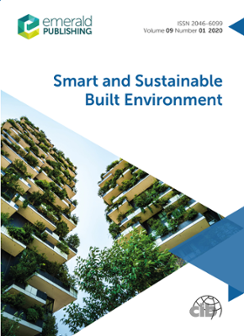Table of contents
Architecture as a strategy for reduced energy consumption? An in-depth analysis of residential practices’ influence on the energy performance of passive houses
Solvår Wågø, Thomas Berker– The purpose of this paper is to discuss how architectural solutions may influence residential practice and energy consumption.
Application of multi-attribute utility theory for sustainable energy decisions in commercial buildings: A case study
Tina Nikou, Leidy KlotzDespite substantial advances in technologies enhancing the energy efficiency of buildings, they remain the largest consumers of energy in the USA compared with other sectors. In…
Occupant satisfaction in LEED-certified higher education buildings
Pamela-Jean N. Driza, Nam-Kyu ParkThe purpose of this paper is to quantify occupant satisfaction levels within Leadership in Energy and Environmental Design (LEED)-certified higher education buildings and…
Demand driven selection of adaptable building technologies for flexibility-in-use
Roel Gijsbers, Jos LichtenbergMost buildings are hardly ever technically equipped to adapt to ever changing user demands. Adaptability of building components is known as an essential technical aid to…
Addressing sustainable challenges in China: The contribution of off-site industrialisation
Xiaolin Zhai, Richard Reed, Anthony MillsThe purpose of this paper is to present an innovative approach to addressing increasing sustainable challenges facing China's built environment which are linked to a diverse range…

ISSN:
2046-6099Online date, start – end:
2012Copyright Holder:
Emerald Publishing LimitedOpen Access:
hybridEditor:
- Dr Farzad Pour Rahimian